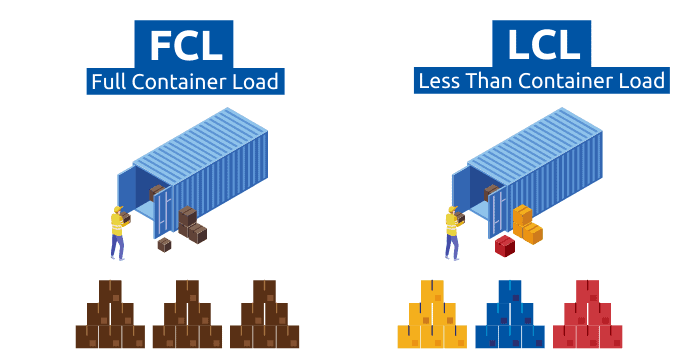- By Della tj
- September 9, 2025
- Air Freight, Shipping
Shipping China to Canada is one of the busiest global trade lanes, serving manufacturers, e-commerce sellers, and retailers. However, many importers often ask: how much does it cost, how long will it take, and which shipping method is best? This guide covers all major aspects: freight rates, transit times, customs requirements, real case examples, and practical tips for reducing costs.
What Shipping Methods Are Available from China to Canada?
The first decision for importers is selecting the right mode of transport. Below is a comparison of the main options.
| Method | Average Cost | Transit Time | Best For | Pros | Cons |
|---|---|---|---|---|---|
| Sea Freight | $2,500–$5,800/container | 25–35 days | Bulk cargo, heavy goods | Lowest unit cost, high volume | Slow, port congestion risks |
| Air Freight | $5–$7/kg | 5–8 days | Urgent shipments | Fast, secure, reliable | High price, weight limits |
| Rail Freight* | $3,200–$4,800/20GP | 18–22 days | Medium cargo to Toronto | Balanced speed and cost | Limited routes, indirect path |
| Courier (DHL, FedEx, UPS) | $6–$9/kg | 5–10 days | Small parcels, e-commerce | Door-to-door, simple customs | Expensive for large loads |
📌*Rail freight connects via China–USA–Canada land and multimodal routes.
How Much Do Container Shipping Rates from China to Canada Cost?
Container costs vary by size and destination port.
| Container Size | Average Cost to Vancouver | Average Cost to Toronto | Average Cost to Montreal |
|---|---|---|---|
| 20GP | $2,500–$2,900 | $3,000–$3,200 | $3,200–$3,500 |
| 40GP | $5,000–$5,500 | $5,300–$5,700 | $5,600–$5,900 |
| 40HQ | $5,200–$5,800 | $5,600–$6,000 | $5,800–$6,200 |
📌West coast ports like Vancouver are cheaper, while inland destinations cost more due to additional trucking and handling.
How Long Does Shipping from China to Canada Take?
Transit times vary depending on method and port.
| Route / Method | Transit Time | Example |
|---|---|---|
| Shanghai → Vancouver (Sea) | 25–28 days | Most direct sea route |
| Shenzhen → Montreal (Sea) | 32–35 days | Longer route + inland rail |
| Beijing → Toronto (Air) | 6–7 days | Direct flight cargo |
| Guangzhou → Calgary (Courier) | 6–9 days | Door-to-door delivery |
| Xi’an → Toronto (Rail) | 18–22 days | Multimodal freight path |
What Documents Are Required for Shipping from China to Canada?
Canadian customs requires accurate paperwork. Importers should prepare:
- Commercial Invoice
- Packing List
- Bill of Lading or Air Waybill
- Certificate of Origin
- HS Codes and Import Declaration
- Insurance Certificate
- Canada Customs Invoice (CCI)
Errors or missing documents cause delays, storage fees, or penalties.
Do Duties and Taxes Affect Shipping China to Canada?
Yes. Canada applies duties based on HS codes, product type, and trade agreements. Importers must also pay Goods and Services Tax (GST, 5%) and, in some provinces, Harmonized Sales Tax (HST). Planning for duties and taxes prevents surprise costs.
Real Case Examples of Shipping China to Canada
Case 1 – Sea Freight FCL
- Route: Shanghai → Vancouver
- Cargo: 1x40HQ furniture
- Cost: $5,400
- Transit Time: 27 days
- Mode: Sea Freight (FCL)
- Result: Lowest cost per unit, warehouse storage required
Case 2 – Air Freight Electronics
- Route: Shenzhen → Toronto Pearson Airport
- Cargo: 400kg consumer electronics
- Cost: $2,700
- Transit Time: 6 days
- Mode: Air Freight
- Result: Higher cost, guaranteed product launch on schedule
Should You Choose FCL or LCL for Sea Freight?
| Criteria | FCL (Full Container Load) | LCL (Less than Container Load) |
|---|---|---|
| Cost | Lower per unit | Higher per unit |
| Cargo Size | Large, full loads | Flexible, small shipments |
| Speed | Faster, direct cargo | Slower, consolidation needed |
| Risk | Lower damage risk | Higher due to mixed cargo |
📌FCL is better for high-volume shippers; LCL works for SMEs with limited cargo.

What Are the Pros and Cons of Shipping Methods?
| Method | Pros | Cons |
|---|---|---|
| Sea Freight | Low cost, large capacity | Long transit times |
| Air Freight | Fast, reliable, low damage risk | Expensive, weight restrictions |
| Rail Freight | Mid-speed, eco-friendly, inland reach | Limited coverage, multimodal needs |
| Courier | Simple, door-to-door, fast clearance | Very costly for bulky cargo |
Can Small Businesses Reduce Shipping China to Canada Costs?
Yes. Strategies include:
- Using LCL instead of air
- Consolidating shipments
- Booking during off-peak seasons
- Working with reliable freight forwarders
These approaches help small businesses save 15–25% annually on logistics.
Do Incoterms Affect Shipping China to Canada Costs?
Yes. Incoterms define who pays what:
- FOB: Buyer pays ocean freight, seller covers local origin costs.
- CIF: Seller pays freight and insurance until destination.
- DDP: Seller pays all duties and freight until buyer’s door.
Selecting correctly avoids disputes and hidden costs.
Should Businesses Work with Freight Forwarders?
Freight forwarders coordinate booking, customs, carriers, and last-mile trucking. They negotiate lower rates, reduce risks, and ensure compliance. For SMEs, forwarders provide expertise and save time.
Conclusion
In conclusion, shipping China to Canada costs vary by method, cargo type, and destination. Sea freight remains the most economical, air freight ensures speed, and rail offers balance. Moreover, customs documents, Incoterms, and duties all affect final expenses. Importers can save by planning shipments outside peak seasons, consolidating cargo, and working with freight forwarders. With the right logistics partner, businesses reduce risks, optimize supply chains, and achieve predictable delivery schedules.
- Consult TJ China Freight Forwarding for the lowest quote. They will provide you with reliable, cost-effective service.
FAQs
Q1.What is the cheapest way for shipping China to Canada?
LCL sea freight from China to Canada is cheapest, offering flexibility and cost savings for small importers and e-commerce sellers.
Q2.How long does air freight take from China to Canada?
Air freight from China to Canada typically takes 5–8 days, offering a fast option for urgent and high-value cargo shipments.
Q3. What customs documents are mandatory when shipping China to Canada?
Required documents for shipping China to Canada include invoice, packing list, bill of lading, HS codes, and Canada Customs Invoice.
Q4.Can e-commerce sellers benefit from courier shipping China to Canada?
Courier shipping from China to Canada provides fast door-to-door delivery, tracking, and simplified customs clearance for online businesses.
Q5.Do Incoterms like DDP increase shipping costs from China to Canada?
Yes, DDP shipping China to Canada covers freight, insurance, and taxes, raising seller responsibility but ensuring predictable landed costs.





